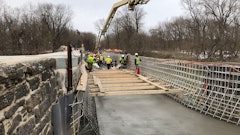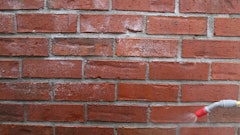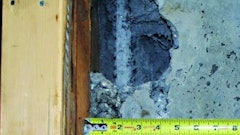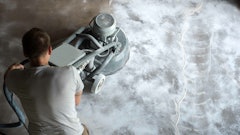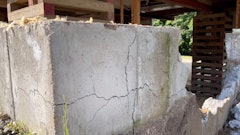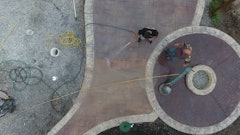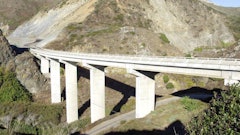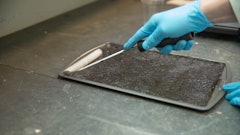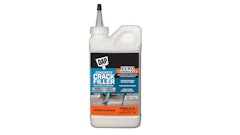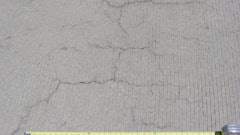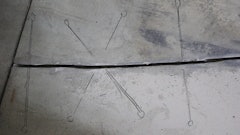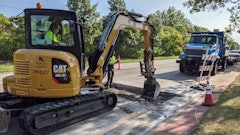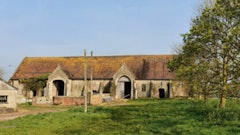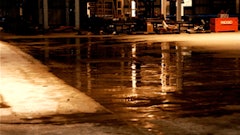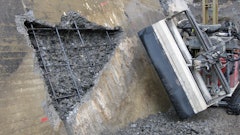
Concrete is one of the most widely used and durable materials available in the construction industry, but it still has its limitations. Exposure to a harsh environments such as freeze-thaw cycles, chemicals used for melting ice and heavy equipment traffic can cause concrete to deteriorate over time. However, not all signs of damage merit a complete tear out and replacement of a concrete installation. Many projects can be brought back to life with some simple rehab.
If concrete is showing signs of age, there are a few things to consider to determine if the concrete requires complete replacement or if it can be resurfaced, saving contractors and clients both time and money.
Assess the Condition of the Concrete
The first step to determine if a concrete installation should be replaced or resurfaced is to assess the condition of the concrete. A concrete slab must be structurally sound in order to be a candidate for resurfacing. While hairline cracks and chipped concrete generally indicate entirely fixable wear and tear, deep, large cracks are a top indicator that the material cannot be salvaged. In addition, soft, scaling concrete surfaces must be removed by mechanical means to a sound, solid surface before it can be resurfaced.
For those who live in parts of the country affected by snow and ice, deicing salts and repeated expansion and contraction can cause significant damage to concrete. Over time, the salts used are absorbed into the concrete as they sit on the surface and are pressed into the concrete via foot and vehicle traffic. These salts are not only detrimental to the surface but also cause internal damage throughout the depth of the slab as they are absorbed through pores in the surface.
Identifying the Cause of Failure
Once the extent of damage has been assessed, the source of failure must be identified and addressed before resurfacing or pouring a new slab.
If the compacted base is compromised, it is only a matter of time before the new pour or resurfaced area fails as well. Erosion damage or soil washout caused by water runoff is a common and serious cause of concrete damage and requires additional repairs to the area. In addition, tree roots can wreak havoc on concrete. Wash out should be addressed and roots should be removed before pouring any new slabs to ensure serious damage is prevented. 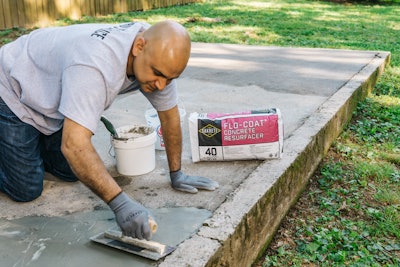
Some slabs are simply more susceptible to more intense wear and tear due to their location or purpose. Excessive point loads can cause damage. If the area experiences heavy traffic from commercial vehicles or heavy equipment such as a roll off dumpster, it is imperative that the area beneath it is sound. These areas may also require more frequent maintenance than others.
Choosing the Right Resurfacing Product
If the concrete is structurally sound but has a powdery surface, is flaking or has hairline cracks, it is likely an ideal candidate for a resurfacing project. Fortunately, there are many product options available for resurfacing depending on the area’s use. Manufacturers offer flowable and self-leveling products that make it possible to resurface sidewalks, driveways, patios and concrete floors.
The main takeaway is that resurfacing products are only as good as the subsurface. One pro-tip is to power wash the concrete surface first, as this will reveal the condition of the surface and severity of the cracks, making it easier to determine best next steps for the resurfacing or repair project. Many resources are available online from manufacturers or industry professionals, making it easier than ever to tackle a resurfacing project.
About the author
Cory Olson is the senior vice president of Sakrete of North America.
Editor's Note: This article was contributed by Sakrete, a provider of concrete, mortar and stucco mixes, as well as repair and maintenance products.







